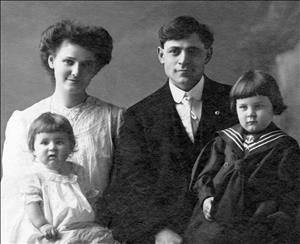In this People's History, Dorothea (Pfister) Nordstrand (1916-2011) tells the story of how Catherine Maynard (1816-1906) brought the first lowly dandelions to Seattle for use in the medical practice of her husband, David "Doc" Maynard (1808-1873). She recalls combing her Seattle neighborhood for dandelions, which her mother would serve up as dinner greens, and gathering the blossoms for her grandmother's wine-making. Her reminiscence reminds us that what we now spurn as a troublesome weed was once considered a useful medicine and a tasty and nourishing vegetable.
A Welcome Weed
Many years ago, in 1852, Catherine Broshears Maynard brought the dandelion to Seattle, as it was well regarded where she came from for its medicinal prowess. She and her husband, David "Doc" Maynard) used it to keep Seattle folks healthy. Dandelion tea was a popular tonic of the day. Over time, the dandelion has changed from being a welcome, useful plant into the pesky weed we view it.
My Swiss Grandmother lived in Monroe, and when we went to visit her in the springtime, we three kids were sent out with paper bags to gather dandelion blossoms wherever we could find them. She used the blossoms to make her favorite dandelion wine.
At our home in Seattle, Mom sent us around the neighborhood offering to pull dandelion plants from any yard where we saw them so we could bring them home. She would remove roots and flowers, carefully wash the leaves and we would have them, cooked with a little sugar in the water and sprinkled with a bit of vinegar, for dinner. We knew them as Spring Tonic. We could find the healthy greens long before the spinach in our garden was available.
How Times Change
On my way to the grocery store recently, my eye was caught by a yard where dandelions had taken over. The green lawn had been polka-dotted with the brilliant yellow blossoms to a point where very little green still showed. It was lovely to look at, but for most homeowners it would be a nightmare.
Seeing that field of bright yellow flowers thrust me straight back into my early childhood. Both my Mom and my Grandmother would have rejoiced to see it. I was reminded, again, that the value of so many things depends on one’s point of view. One person’s pest plant can be another’s source of healthy food and fine wine.

